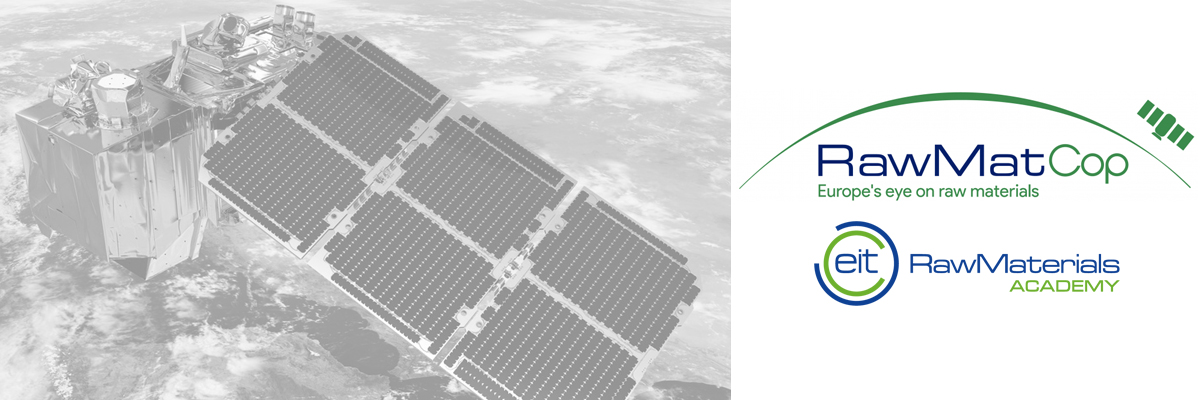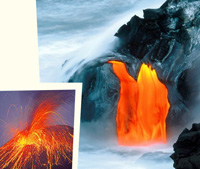
Details
- Date: 17-20 June, 2019
- LocationUniversità di Bologna, Department of civil, chemical, environmental and Materials Engineering (DICAM), Via Umberto Terracini 28, 40131 Bologna, Italy
- Registration deadline:19 April 2019.
- Further information: https://eitrawmaterials.eu/eit-rm-academy/rawmatcop/shortcourse2019/
- Contact: academy@eitrawmaterials.eu
Overview
Raw materials are essential for human development and to fuel a future based on a decarbonized and circular economy. Yet, several key challenges in the supply of mineral resources are their availability and the social and environmental impacts of their exploration, extraction, processing, use and end-of-life. Earth Observation (EO) data and services from Copernicus provides a multi-scale coverage of the Earth’s surface and can support smarter exploration, more efficient and cost-effective primary production and boost environmental impact monitoring across the raw materials life cycle.
The RawMatCop Academy 2019, Copernicus for RawMaterials, offers a hands-on approach and will show you how to unlock the power of Copernicus for your company, organization or research along the entire life cycle of raw materials. During the RawMatCop Academy 2019 you will have the opportunity to work directly with Copernicus’ Sentinel satellite data and open source software to demonstrate how it can be used for:
- Securing primary and secondary mineral and material resources needed to transition to a sustainable and circular economy, and
- Monitoring environmental impact and increasing safety.
The course is a part of the RawMatCop programme , a cooperation between EIT RawMaterials and Copernicus, which aims to demonstrate new applications at the intersection between Earth observation data and the raw materials sector. It is funded by European Commission DG Internal Market, Industry, Entrepreneurship and SMEs (DG GROW), and EIT RawMaterials.
Course content and structure
The course will combine a mix of expert lectures and hands-on group work using case studies to demonstrate Copernicus applications.
As a course participant, you will hear from experts from industry and the research community on how Copernicus can make exploiting primary and secondary raw materials more cost-effective, safer and help you comply with environmental legislation.
Course topics will include:
- Overview: Raw materials industrial and societal challenges facing Europe (e.g. lower ore grades, social license to operate, ground stability at active and closed mines, lack of critical raw materials) and the role of Copernicus to tackle these challenges
- Future: Smarter, cost-effective solutions for raw materials exploration and mining + optimized ways to monitor environmental impact and increase safety. For example, you will hear how EO can be used to:
- Improve accuracy of grade maps and optimize sampling of tailings and stockpiles
- Focus exploration efforts in challenging environments
- Deliver cost-effective, timely and comprehensive monitoring solutions for mining activities
- Enhance transparency with public stakeholders regarding mining activities and environmental impacts (social license to operate)
- Increase safety in and around mines via low-cost, low-maintenance ground stability monitoring tools.
- Case studies: Learn how Copernicus can be used in concrete case studies
As a course participant you will receive introductory technical lectures on the basics of imaging technology, optical and active remote sensing, remote sensing in raw materials context, and the free data and software used for the course.
The remainder of the course will primarily consist of hands-on exercises in small groups, in which you will work directly with Earth Observation data tools using powerful RUS Virtual Machines provided by Copernicus on case studies organized by theme:
- Mineral Resources Supply: EO/Copernicus data tools and techniques for exploration of mineral resources:
- Case study: Iron oxide copper gold (IOCG) mineralization exploration in the Arctic
- Case study: Critical raw materials exploration in mine tailings
- Environmental Impact Monitoring: EO/Copernicus data tools and techniques for monitoring of environmental impacts from mining:
- Case study: Alluvial gold mining monitoring
- Case study: Contamination monitoring of open-pit mines
- Case study: Ground stability monitoring
Who should apply to RawMatCop Academy 2019?
- R&D industrial managers across the value chain, from large industry but also SMEs and start-ups (e.g. exploration companies, mining companies, mining equipment manufacturers, etc)
- Senior management in industries across the value chain
- Development experts (professionals from government agencies)
- Scientists and researchers in EU and national governmental agencies
- Environmental experts
- Geoscientists (mining engineers, geologists, geomatics, geophysics, etc.)
- Doctoral and post-doctoral researchers.
Prerequisites
- Background either in earth sciences, environmental and natural resources management, engineering, mining and exploration, or GIS
- Number of Participants: 30
- Language: English
- Fees and registration: The course is offered free of cost. All transportation, accommodation and subsistence costs will be covered by EIT RawMaterials.
Apply now for the RawMatCop short course 2019. Deadline for applications is 19 April 2019.
Further details on the application and selection process is available on the Call for Applications (PDF).
About Copernicus
Copernicus is the European Union’s Earth Observation Programme, looking at our planet and its environment for the ultimate benefit of all.With the Copernicus programme, satellite data from “the Sentinels” is freely available with a high revisit time. This allows a better understanding of areas of interest at a low-cost and in a non-stop and in a stand-alone way. Therefore, Earth Observation (EO) methods contribute to a safe and sustainable supply of mineral resources through improving major aspects such as exploration efficiency, exploitation safety, and waste tracking of mineral resources.

